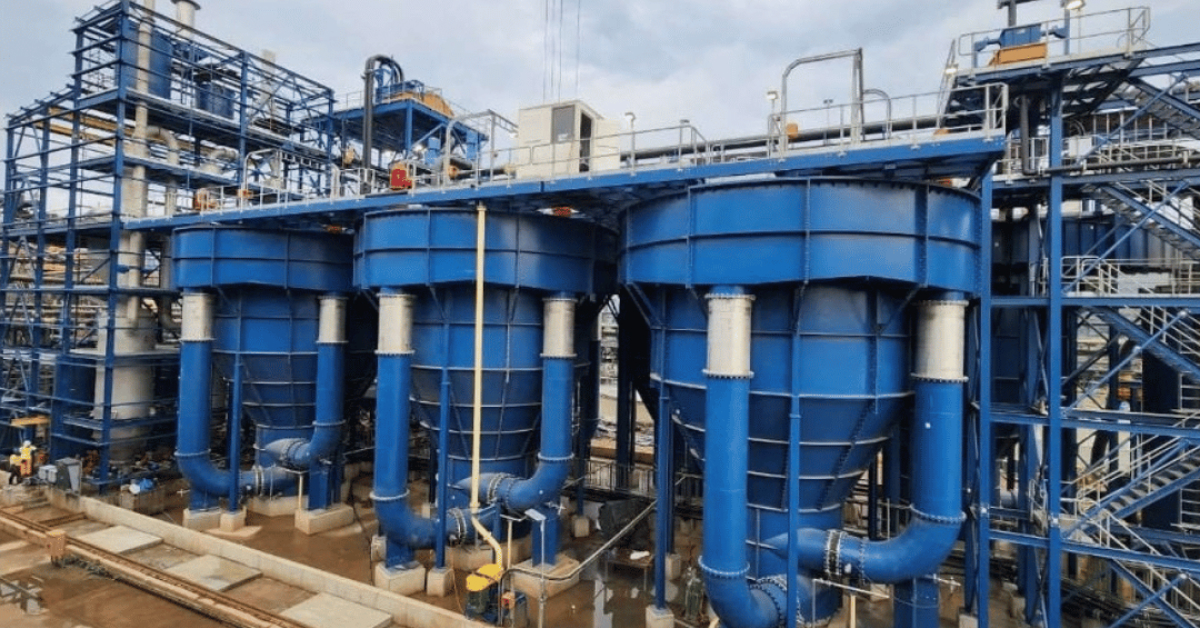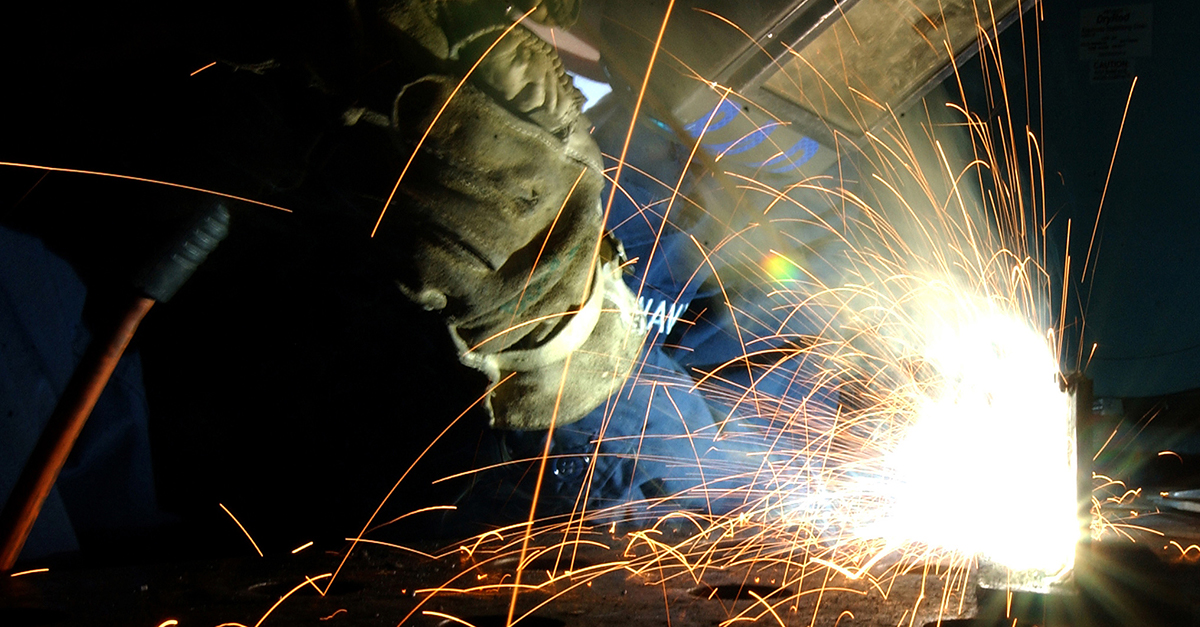After much preparation and research, (investigation into a certification scheme started in the 90’s) the SAIW became the first authorised national body outside Europe to be accredited as an International Institute of welding (IIW) company certification body. This means that the SAIW can now certify South African companies that comply with ISO 3834. More than 500 companies worldwide have so far been certified under the IIW scheme.
This is of great significance to the steel construction industry, since one of the priorities of the SAISC is to ensure that the structural steel for the power stations, to be built in South Africa over the next few years, is fabricated locally. Eskom now require certification from its suppliers for example Hitachi and this will surely also be a requirement of their steelwork contractors. Steinmuller has already approached the SAIW for accreditation for this purpose, and others are sure to follow.
Apart from the power stations, the broader business objectives of the accreditation scheme are to make maximum use of local industry in domestic projects and maintenance programmes and to improve our local fabricators’ credibility in export markets.
SAIW executive director Jim Guild reiterated that the scheme will not only be of benefit to the large end-users but also to supplier companies. “The growth in the local economy has put pressure on the welding industry and having such a scheme will not only benefit large end-users in the process of choosing the correct supplier but will also undoubtedly show them that there are many local companies who are capable of doing the job, obviating the need to look for suppliers from beyond our borders,” he says.
He added that now that the IIW had ratified the scheme the other side of the coin is also true in that local companies seeking work in foreign countries will be better equipped to do so if they have the Company Certification Scheme stamp of approval.
BENEFITS OF THE WELDING CERTIFICATION SCHEME
There are many benefits associated with the certification scheme to all the members of the ‘food chain’. Clients can be assured that they are getting built-in quality with the increased likelihood of fabrication delivery being on time and within budget. They can specify compliance to this standard in contract requirements. Companies also know that their certified suppliers are expertly led as well as independently and consistently assessed.
Contractors can be positive of a huge return on investment to be accredited. Firstly they are ensured of a clear, high profile, independent verification of compliance by South Africa’s leading authority on welding. Secondly they obtain the system and tools to achieve built in quality. With accreditation comes self-confidence and customer confidence. A global compliance listing for companies involved in exports is very important as more and more countries are aware of and insisting on a welding accreditation.
Other benefits include traceability; the opportunity to reap benefits of a modern process management tool in South Africa; having the means of demonstrating competence and ability to local and international partners; independent evaluation for potential fabrication customers. Certification also reduces the need for customer audits of fabricators. And lastly accredited certification creates an uplifted status and a unique market positioning.
WHAT DOES THE CERTIFICATION SCHEME ENTAIL?
The IIW accreditation is based on ISO 3834. Being accredited to at least level 3 of the standard implies that the basic control requirements for welding codes of construction, for example AWS D1.1 for steel structures, are in place.
Compliance with ISO 3834 should be seen as a process control rather than a quality management system, which people tend to associate with mountains of paperwork. Jim says: “Instead, working to ISO 3834 gives companies the tools to achieve built-in quality, getting it right the first time.”
ISO 3834 does not replace ISO 9001:2000 but compliments it as a process management tool. It can however stand alone and be applied independently.It is a management system to manage the company’s welding capability’s resources – such as people, paperwork, equipment and systems. This ensures control at all levels of the welding process from design to the handover of the project. This will help to avoid failures in the industry from catastrophic to just plain embarrassing – thus ensuring welding integrity.
The documentation of the Welding Fabricator Certification Scheme (SCERT) consists of six parts:
Part 1: Criteria for selection and use
Part 2: Comprehensive quality requirements
Part 3: Standard quality requirements
Part 4: Elementary quality requirements
Part 5: Normative references for the requirements of ISO 3834-2. ISO 3834- 3 and ISO 3834-4
Part 6: Guidance on implementing ISO 3834
The first 5 parts are available from the SABS adopted from ISO 3834. The guidelines as set out in part 6 are available in technical reports from the SABS or can be purchased directly from the ISO website (http://www.iso.org).
The quality requirements or levels of control are basically defined in terms of the complexity of the welding required (see table on page 33).
Structural steelwork falls within level three where the standard is demanding, but the range of sections and grades of steel used do not vary much. Level 2 covers specialist welding usually done in complex projects such as some of the power station components and pressure vessels – usually involving high risks and safety issues.
The management system requires a high level of management of the welding team which need to look at the whole process from design to execution and establish what procedures need to be done, if the workshop has the capability and resources to do the kind of welding required and manage the supervisors and welders on the floor to execute the job to the set standards.
HOW TO GET ISO 3834 ACCREDITATION?
Step one – Complete the application form
available from the SAIW
Step two – Assessment for a quotation
The SAIW will send an assessor to your works to establish how your welding process works and which systems you already have in place toprovide you with a quotation of the assessment. If the assessor concludes that you will not be able to receive accreditation he will give you basic guidelines and information to upgrade your system to be able to apply for accreditation.
Step three – Sign the quotation and placean order
Step four – Orientation visit
The assessment team will schedule a visit to your workshop to meet the staff and plan the assessment according to your individual business processes etc.
Step five – Assessment
The assessment team consists of a lead assessor and a technical expert. An assessment usually takes a whole day. After the assessment has been completed, a concluding meeting will cover the team’s observations and include any non-conformances.
Step six – The report
You will receive a report from the assessment team which will list all nonconformances to be rectified before the team can recommend certification or if certification is out of the question go through the processes that have to be put in place before you can re-apply for certification.
Step seven – Clearances of NCR’s
You have to rectify all NCR’s and this need to be assessed and cleared by the accreditation team.
Step eight – Recommendation to Accreditation Board
If the board accepts and approves the recommendation you will receive a global compliance listing on the IIW and SAIW website valid for 5 years. The SAIW will either send you an annual surveillance report to complete if you have a IWS, IWT or IWE employed at the company or conduct an annual surveillance audit if not.
WHAT DOES IT COST?
The cost of accreditation is based on complexity of work, steel tonnage, the number of technical people and the level of accreditation required.
Costs: Initial assessment
R 20 300 to R 34 200
Costs: Annual surveillance
R 4 400 to R 8 800
Since the launch of the SAIW Welding Fabricator Certification Scheme it has rapidly gained momentum following a positive response from a wide range of fabricators countrywide. Eighteen applications have already been received and ten assessments have been completed, with six successful.
Qualification and certification of NDT personnel by SAIW Certification, the certification arm of SAIW, is accredited by the South African National Accreditation System (SANAS), a member of the International Accreditation Forum (IAF). This means that NDT personnel trained by SAIW and qualified and certified by SAIW Certification enjoy acceptance and recognition in the global workplace.
Contact Persons
Richard Fowles John McLeish
Project Manager Certification Manager
011 374 0019 011 374 0007
fowlesr@saiw.co.za mcleishj@saiw.co.za






